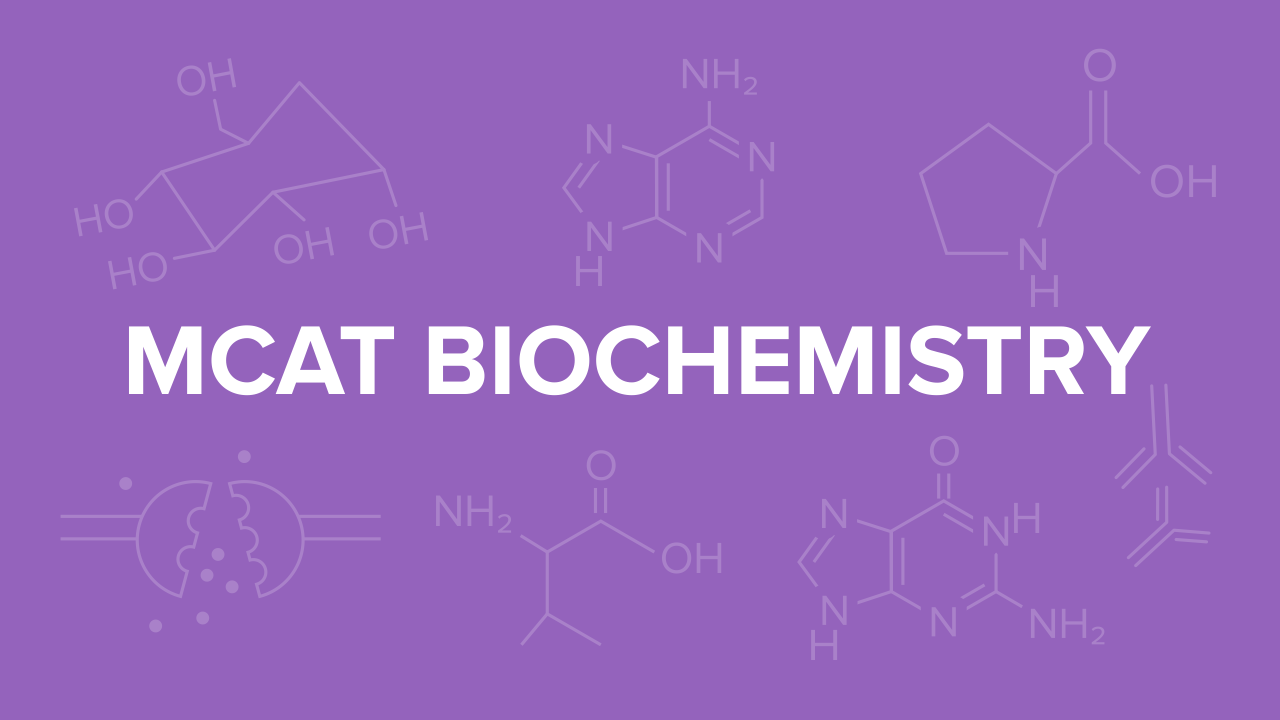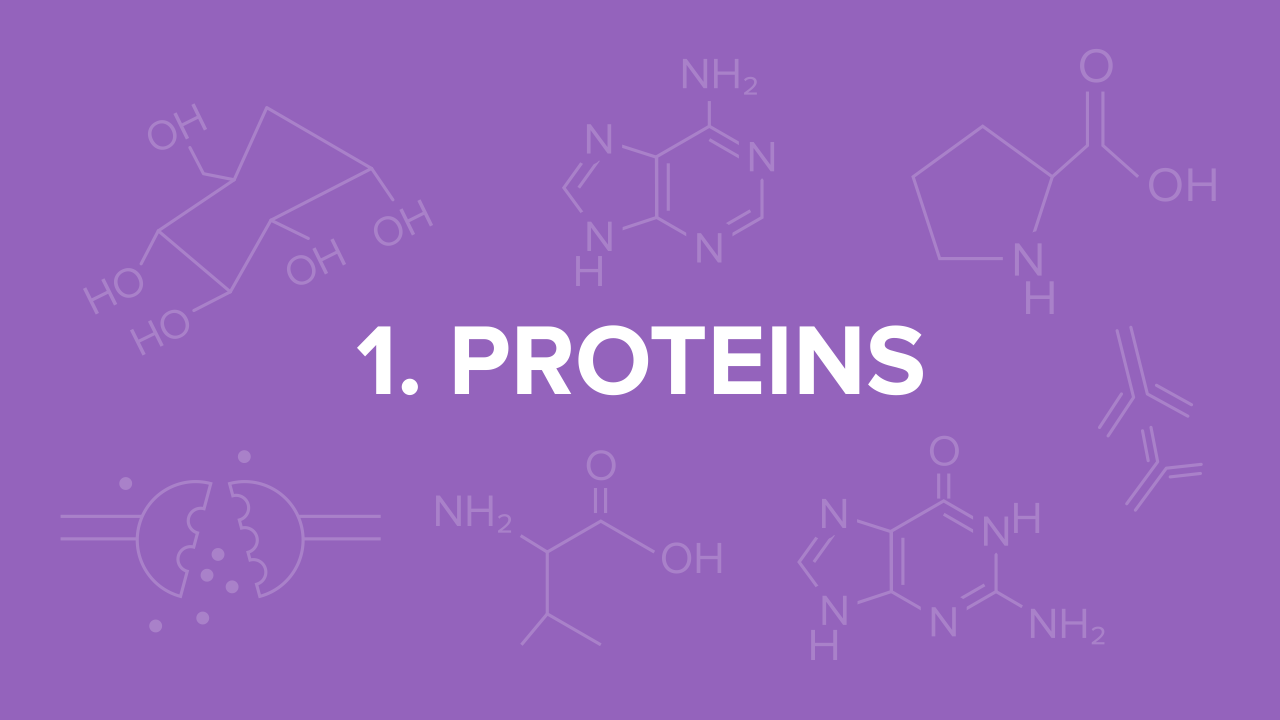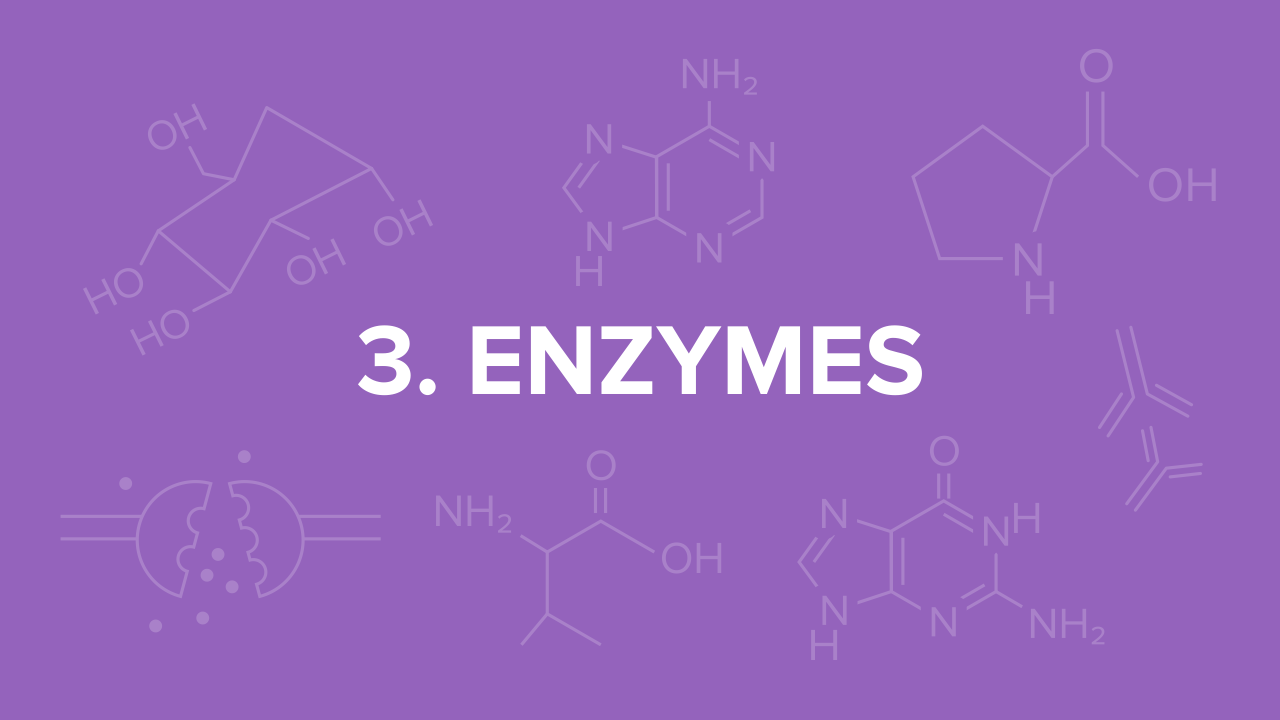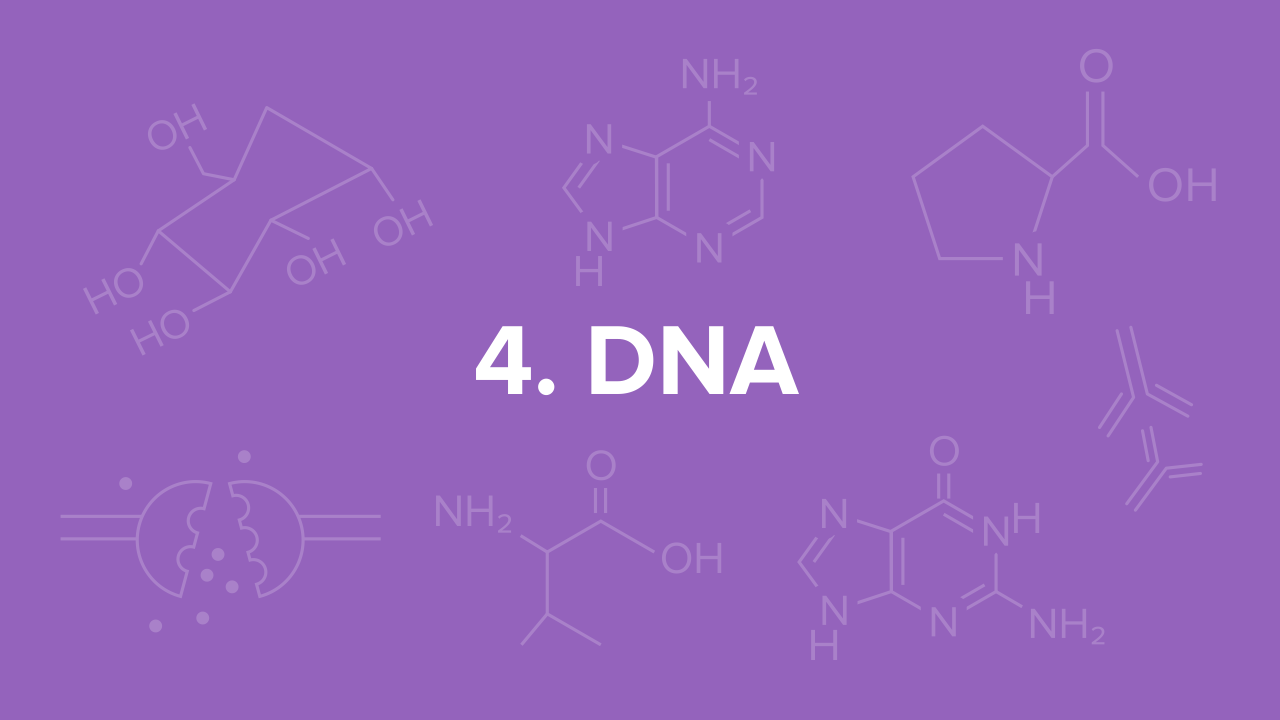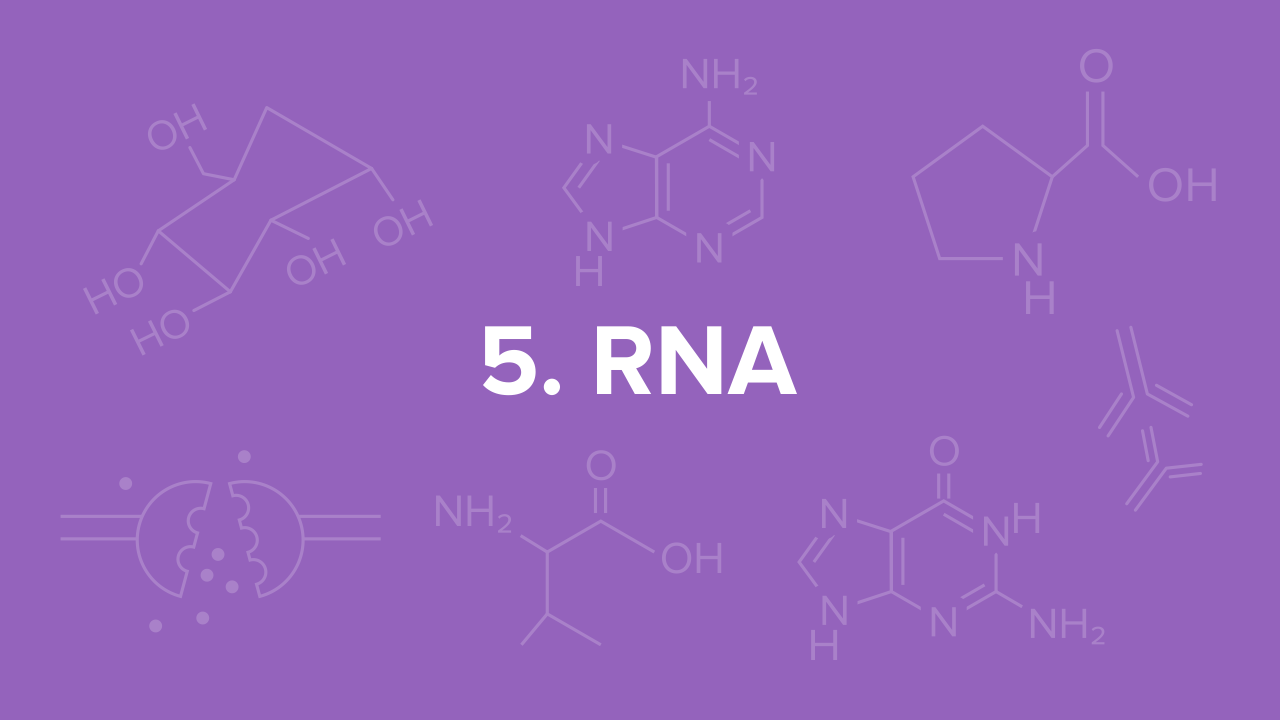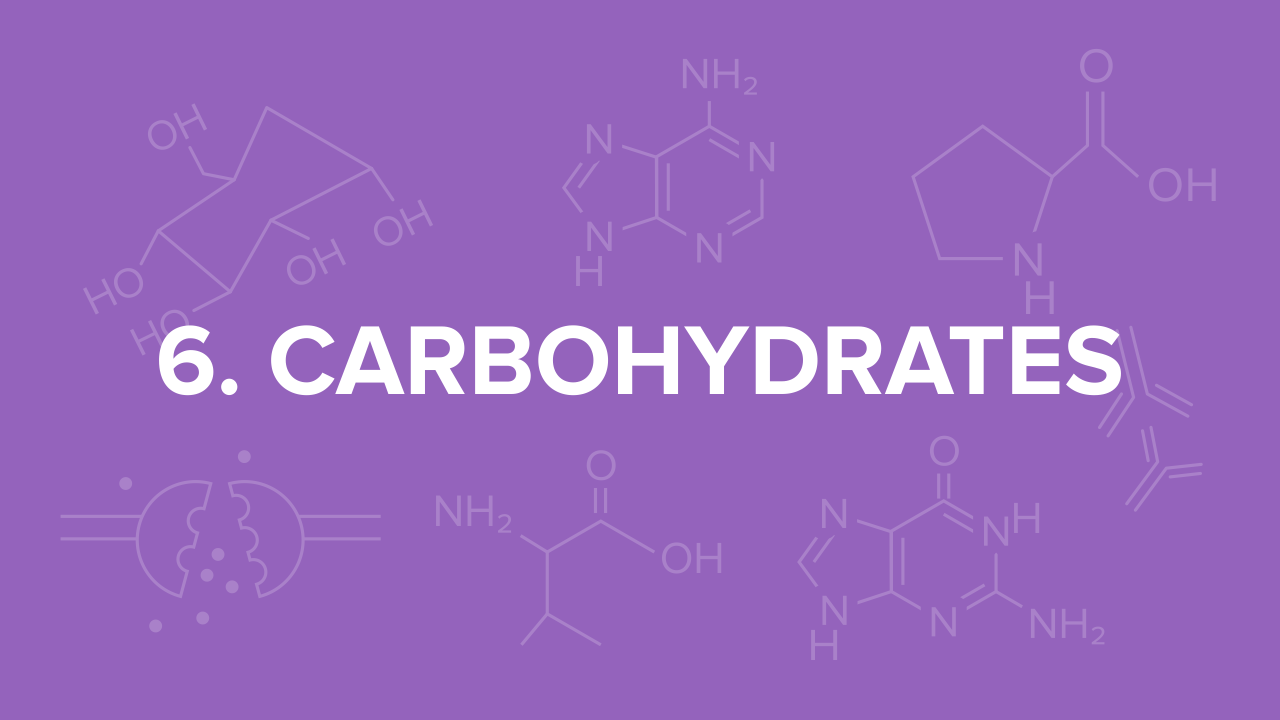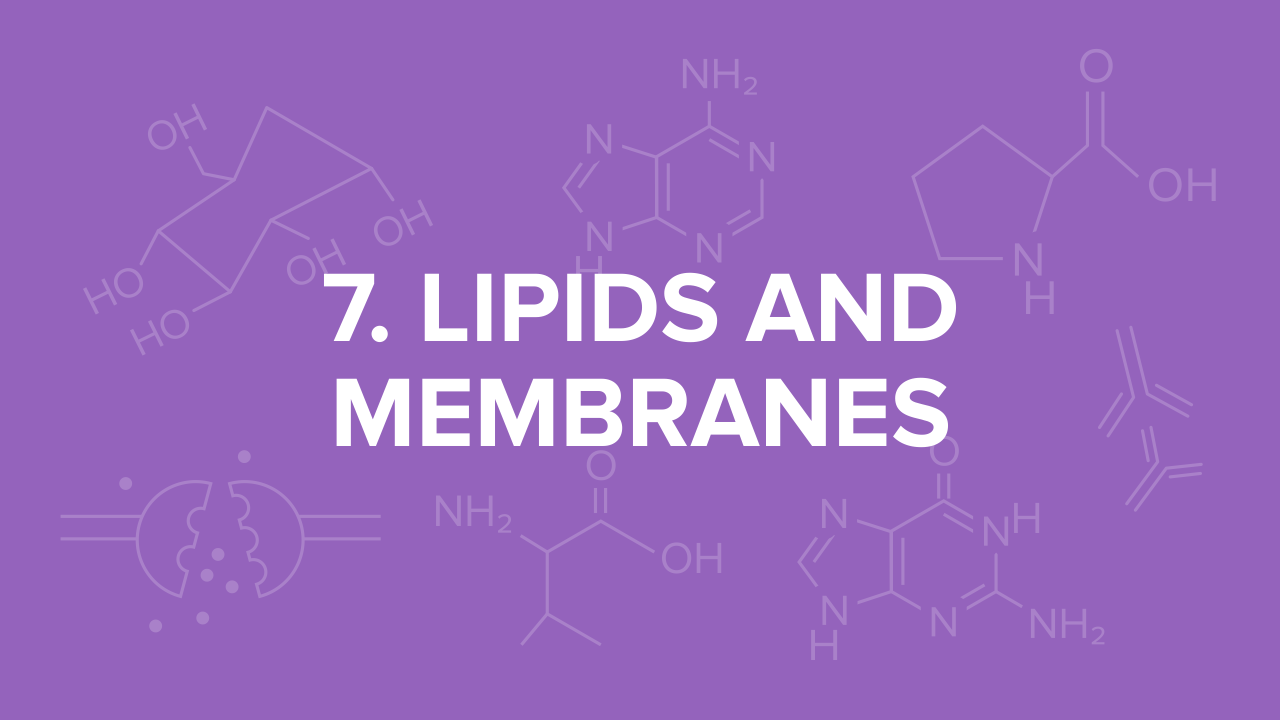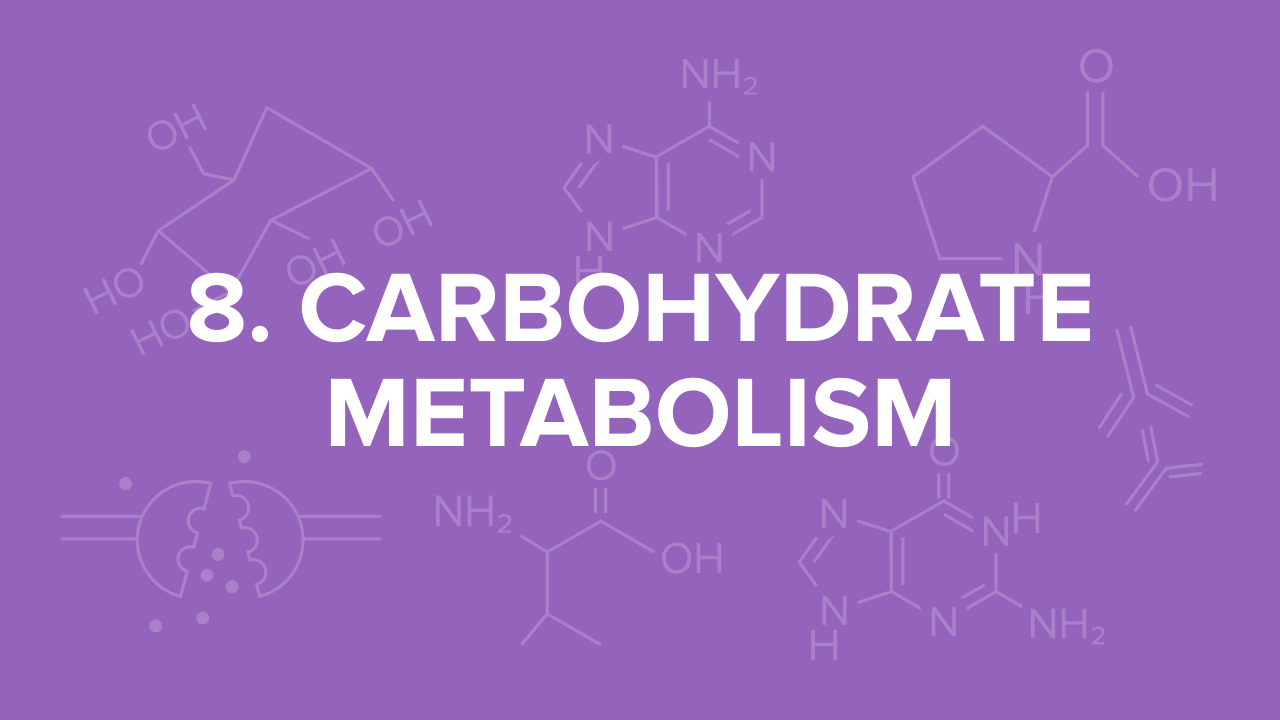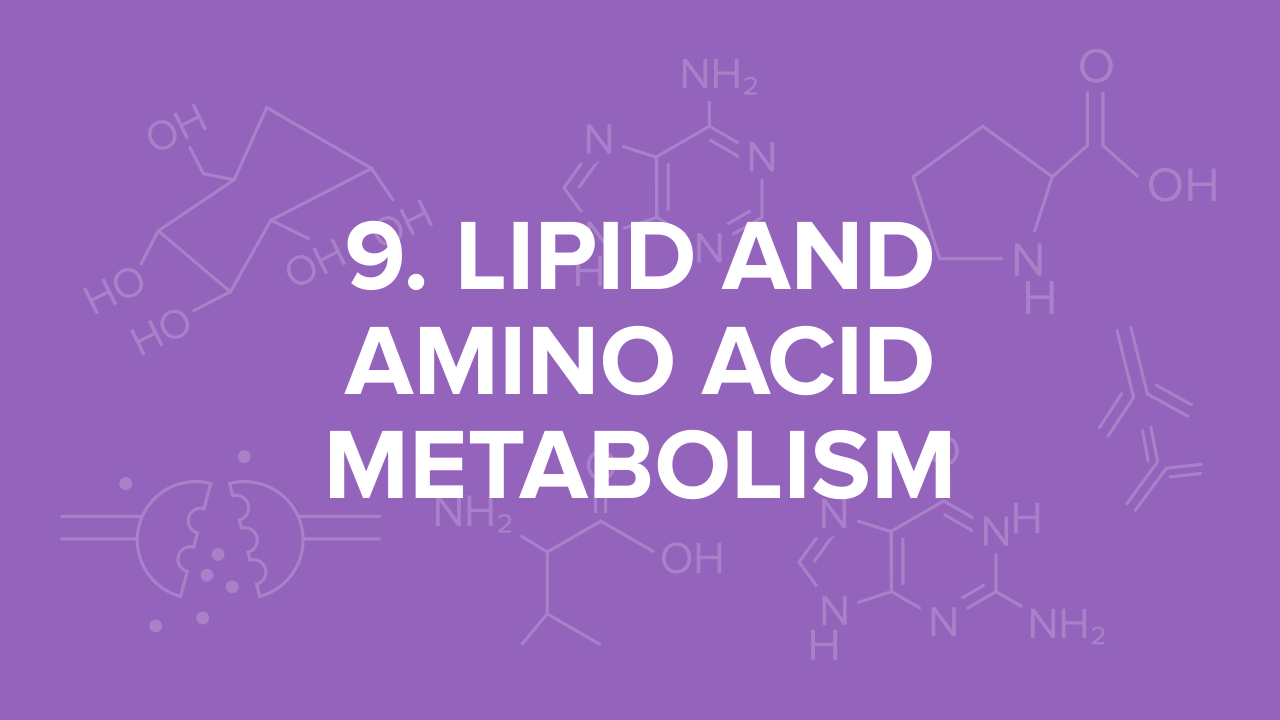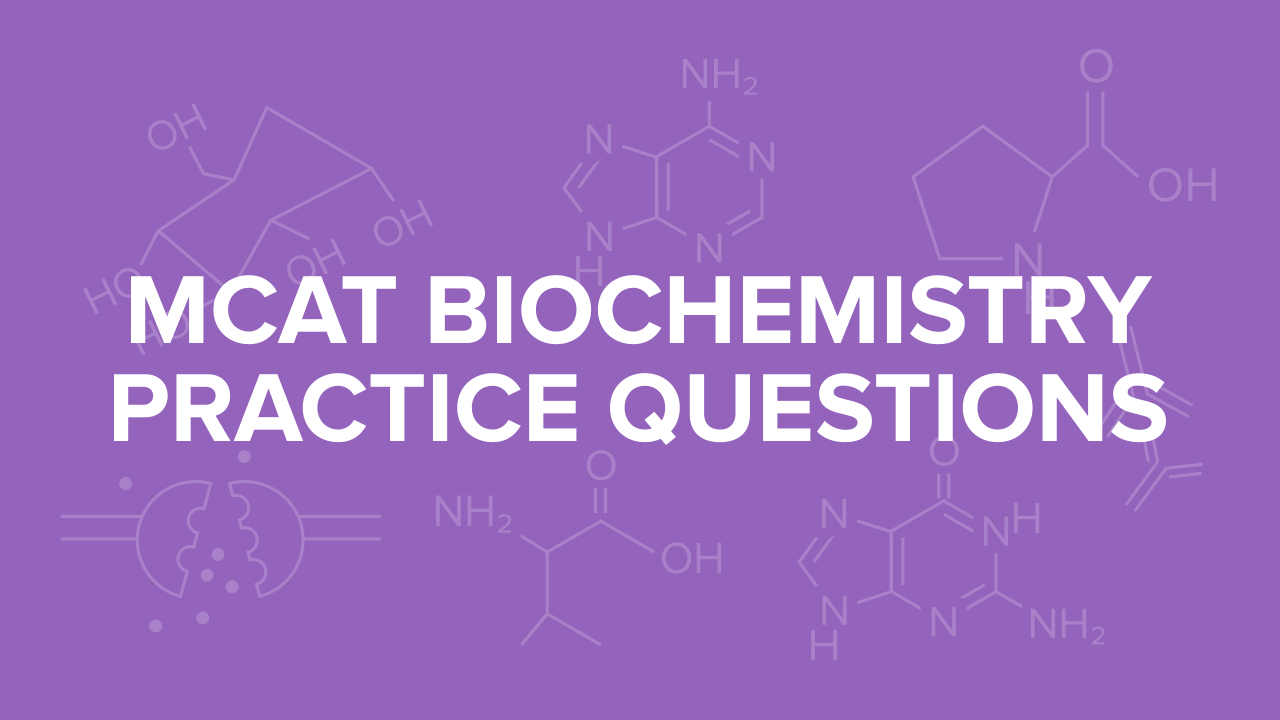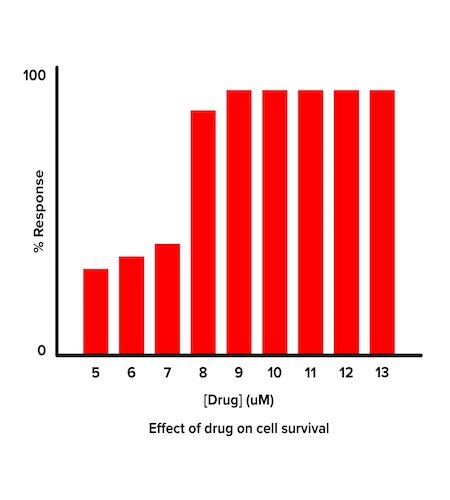MCAT Biochemistry: Everything You Need to Know
/The topics you need to know to ace MCAT biochemistry questions, plus strategies to help you maximize your score
(Note: This resource also appears in our MCAT Ultimate Guide.)
----
Part 1: Introduction
Part 2: The MCAT biochemistry topics you need to know for the exam
Part 3: MCAT biochemistry study strategies
----
Part 1: Introduction
You’ve completed your premed course requirements and are now ready to prep for and take the MCAT. You might have a lot of questions: How hard is the MCAT? What subjects are covered on the exam?
Unlike organic chemistry and physics, there will be a lot of biochemistry on the MCAT. Surprisingly, the amount of time you might have spent on a subject in college does not correlate to how much it will show up on the exam. Even though you spent many long days and nights stressing about organic chemistry mechanisms or tough physics problems, knowing those subjects will not yield you as many points on test day as knowing your biochemistry.
Your MCAT comprises four sections: Chemistry and Physics (C/P), Critical Analysis and Reasoning (CARS), Biology and Biochemistry (B/B), and Psychology and Sociology (P/S). Biochemistry, which we will discuss in depth in this blog, is tested on two sections of your exam.
Biochemistry is about 25% (plus or minus 5%) of the C/P and B/B sections. These sections have 59 questions each, meaning that you may see between 24 and 35 biochemistry questions. That’s a big part of your score, so understanding the content and correctly applying it will be massively valuable.
In this resource, we provide all of the content you need to know for the MCAT biochemistry section. In addition, we provide study strategies developed by experts who scored a perfect 132 on the C/P and B/B sections that you can use to help maximize your own MCAT score. Let’s get started!
----
Part 2: The MCAT biochemistry topics you need to know for the exam
Note: Clicking on any of these thumbnails will take you to a comprehensive guide on that topic.
----
Part 3: MCAT biochemistry study strategies
In this section of the guide, we will present five high-yield study strategies you can use to conquer all MCAT biochemistry questions.
MCAT Biochemistry Tip #1: Practice interpreting graphs, figures, and tables using the TAID P method.
TAID P stands for title, axes, independent variable, dependent variable, and patterns. If you can identify these elements in a graph, figure, or table, you will be able to understand what the data is telling you.
Let’s dive into this example using the TAID P method:
T (title): The title states: effect of drug on cell survival. From this title, we can determine that the researchers are treating cells with a drug and measuring cell survival.
A (axes): The x-axis shows increasing concentrations of drug micromolar concentrations while the y-axis measures the percentage response. What does the percentage response mean? From the information that we have so far, we know that it must have something to do with survival.
I/D (independent/dependent variables): The axes make it easy to determine the independent and dependent variables, which are I and D in the TAID P method. First, what are the independent and dependent variables? The independent variable is something that you change on purpose. The dependent variable is a measured response based on this change.
The independent variable is always displayed on the x-axis, so what is the independent variable in our figure? Drug concentration! The dependent variable, on the other hand, is shown on the y-axis, so we know that drug response is our dependent variable.
P (patterns): Finally, let’s analyze the patterns in our graph to see if there are any big-picture trends. What do you see in our graph? Is there a drug concentration at which we see a large increase in the percentage response? A sharp transition in response levels occurs between 7 and 8 uM, and drug concentrations above 8 uM lead to a favorable percent response.
You should aim to identify the TAID P elements for any given figure within 15-20 seconds. The goal is to understand the big picture without getting lost in the small details. If you find yourself spending more than 15-20 seconds, wrap up your current thought and move on in the passage or go to the questions.
You shouldn’t spend too much time on any given figure during your first reading of the passage because there may not even be a question on that figure! For example, if an MCAT biology/biochemistry passage has Figures 1, 2, and 3, the test writers may only ask a question about Figures 1 and 2, so you don’t want to waste a minute understanding Figure 3 in great detail if the MCAT is not even going to ask you a question about it.
MCAT Biochemistry Tip #2: When you review a biochemistry figure while going over your mistakes, study every small detail of each figure carefully.
Anytime you take an MCAT passage on biochemistry that has a figure, you should come back after you have submitted the answers and thoroughly review the passage. Why should you do this? By practicing applying the TAID P method under no time constraints, you will get better at being able to quickly and accurately interpret figures.
By the time you have completed several full-length practice exams, you will have taken dozens of MCAT passages on biochemistry. If you spend the time to review the figures in detail on each of those during your test review, there are very few MCAT figures that will confuse you.
MCAT Biochemistry Tip #3: Know the one-letter code, three-letter code, structures, and chemical properties of all twenty amino acids.
This tip is one of the most high-yield tips you will receive as it is virtually guaranteed that you will see amino acid questions on both the MCAT C/P and B/B sections. It is not enough to memorize the structures of the twenty amino acids, but you should know what properties different structures provide the amino acids.
For example, would you be more likely to see an arginine, which carries a positive charge, or a valine, which is hydrophobic, on the exterior of a protein? The exterior of a protein is usually comprised of hydrophilic residues as it interacts with water, so we would be much more likely to see the charged arginine on the outside of a protein since it is positively charged and can interact with water.
Let’s go through an example of an MCAT-style amino acids question:
Which of the following amino acids is most likely located at the junction of two alpha helices in a protein domain?
a) Proline
b) Tryptophan
c) Serine
d) Glutamine
There are two amino acids that are known to introduce flexibility and kinks in peptide chains: proline and glycine. We are likely to see an amino acid that changes the direction of the chain by introducing flexibility at the junction of two alpha helices, so answer choice A is correct.
Notice that the question did not ask us what the structure of proline is, but rather the question asked us to identify which amino acid side chain has the necessary properties to be located at the junction of two alpha helices. Know your amino acids backwards and forwards to grab easy (and essential) points on the MCAT!
MCAT Biochemistry Tip #4: understand the integration of metabolism by focusing on rate limiting steps and big picture ideas.
Many students often assume that they will need to memorize every enzyme, reactant, product, and their structures in metabolic pathways such as glycolysis. Memorizing and maintaining the memory of these details is no easy feat, and it will require time and effort. Your time and effort, however, is very valuable while studying for the MCAT, and it is much better spent elsewhere on high-yield material that is more likely to show up on Test Day.
What is high yield from glycolysis? Instead of memorizing every small detail, memorize the rate-limiting enzymes that control pathway flux, or how fast the pathway is moving. In other words, you should be able to answer the following questions for each metabolic pathway: what are the non-reversible enzymes, and how does the body regulate these enzymes in order to regulate our metabolism?
Let’s look at an example. Phosphofructokinase-1, or PFK-1, is the rate limiting step of glycolysis. This means that the entire glycolysis pathway can only move as quickly as PFK-1 is working. Why would the body do this? Rate limiting steps are often very important regulatory points within metabolism and biological pathways in general.
If we eat a large meal and have lots of glucose in our bloodstream, we want to process this glucose to either use it as immediate energy or store it for future use. As a result, we need to carry out glycolysis. After we eat the large meal, insulin is released into our bloodstream, and through a series of steps, it upregulates PFK-1 so that the enzyme works more quickly and thereby allows glycolysis to occur more quickly.
The metabolic pathways you should know at this level of detail are:
glycolysis
gluconeogenesis
glycogenesis
glycogenolysis
Krebs cycle
electron transport chain/ATP synthesis
fermentation
pentose phosphate pathway
fatty acid synthesis
fatty acid oxidation (beta-oxidation)
MCAT Biochemistry Tip #5: Be familiar with experimental techniques.
Biochemical experimental techniques on the MCAT include PCR, Western blot, Southern blot, Northern blot, gel electrophoresis, SDS-PAGE/reducing gels versus native gels, molecular cloning, and transformation/conjugation/transduction.
You will encounter these techniques in biochemistry passages, and by applying strategies 1 and 2, you will be able to work your way through them. Here, we will go over what each technique does at a high-level.
PCR: This technique can amplify small amounts of DNA and is useful in modern applications such as sequencing or determining cellular mRNA levels.
Western blot: This technique measures protein levels in a sample using antibodies.
Southern blot: This technique detects DNA levels.
Northern blot: This technique detects RNA levels.
Gel electrophoresis: This technique separates molecules on the basis of size.
SDS-PAGE/reducing gels: This technique separates denatured proteins on the basis of size.
Native gels: This technique separates proteins in their native conformation that allows subunits to remain intact.
Molecular cloning: This technique is used to introduce genetic information into a plasmid for protein expression or genetic manipulation.
Transformation/conjugation/transduction: These techniques are used to transfer genetic information into bacterial species.
By using these five study strategies, you will be on your way to acing all of the MCAT biochemistry questions in no time!

